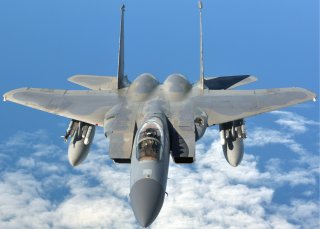Is the U.S. Military Prepared to Fight 3 Wars at Once?
To remain a global power, the United States must preserve a favorable balance of power in Europe, the Middle East and East Asia.
Six years ago, I testified before the United States Senate and suggested the return of mass and attrition as foundational force planning principles within the national defense strategy. I went on to note the need was urgent given our existing capability gaps against China and Russia in particular.
Fast forward to 2023 and a war of mass precision, at range and at scale, is taking place in Ukraine. Unfortunately, the US military did not use the intervening years to get well.
Congress and the Budget Control Act certainly did them no favors, either. But even worse is the seeming inability in Washington to plan beyond a preferred outcome, rather than a more likely—and bloody—reality.
Policymakers should not be lulled into complacency by faulty assumptions of a technologically unmatched and better trained military, as years of prioritizing capability over capacity have created a brittle force. The war in Ukraine should also dispel any considerations that long and violent wars are unlikely.
These myths become ever more apparent as China continues to achieve parity with—or exceed—the United States military in several modernization areas, including land-based conventional ballistic and cruise missiles, shipbuilding, integrated air defense systems, and land-based (stationary and mobile) intercontinental ballistic missile launchers.
Furthermore, China has the world’s largest standing army, navy, coast guard, maritime militia, and sub-strategic missile force. As of 2020, the People’s Liberation Army Navy (PLAN) had 355 battle force ships, and the US Navy had 296. In the years since, that gap has only widened. Modern projections indicate that by 2035, China’s navy will grow to 475 ships, while the United States will remain stagnant at just 305 ships as ship retirements take their toll on the aging fleet. China’s fleet is also undergoing rapid modernization, with the PLAN of the future consisting of increased quantities of modern aircraft carriers, destroyers, cruisers, and nuclear-powered submarines.
China’s widening lead in terms of sheer quantity is reinforced by its staggering industrial ability to produce warships. Information from the Office of Naval Intelligence reveals the ever-growing gap between the shipbuilding industries supporting the American and Chinese navies. The briefing notes that Beijing’s fleet is being built by a robust Chinese military-civil shipbuilding industry, “…more than 200 times more capable of producing surface warships and submarines,” than the American shipbuilding industry. If conflict broke out and losses had to be replaced, Washington would have to make tough choices with limited production capacity, while Beijing could start putting down hulls of all shapes and sizes.
The war in the Ukraine has prompted the US Army to move significantly faster in munitions production and surge their defense industrial base to keep pace with demand for shells. But this surge is the exception and not the rule when it comes to the investment portfolios of the Armed Forces faced with looming budget cuts.
Worse yet, the inadequate levels of precision munitions on hand for the US military lays bare the fact that Washington has allowed America’s defense industry to size and scale to just one war at a time. The consequences of this atrophy are now painfully apparent as horrific wars are simultaneously underway in Europe and the Middle East. Washington should not be forced to choose which of our allies it can support at any given time.
All of these signs indicate that it is time to dump the failed Pentagon one-war planning and adopt a “three-theater” force-sizing construct that accounts for the vast range of activities the military performs.
To remain a global power, the United States must preserve a favorable balance of power in Europe, the Middle East and East Asia. Furthermore, Washington must remember that there is no one-size-fits-all solution to maintaining American security, and that the “ways and means of doing so differ from theater to theater,” as noted by my colleague Giselle Donnelly.
This means that not only must the active duty military grow—and budgets alongside it—but also be coupled with bolstered manufacturing ability to support those in uniform for a new era of protracted engagements. These engagements will require a strong industrial base to provide necessary capabilities for rapid repair in theater and sustained production. Just as equipment without soldiers to man them are essentially paperweights, so too are the armed forces without a robust and healthy industrial base necessary to maintain combat power.
Without a strong defense industrial base, America is destined to lose the next war more quickly.
Mackenzie Eaglen is a senior fellow at the American Enterprise Institute (AEI), where she works on defense strategy, defense budgets, and military readiness.
This article was first published by the American Enterprise Institute.
Image: Creative Commons.

